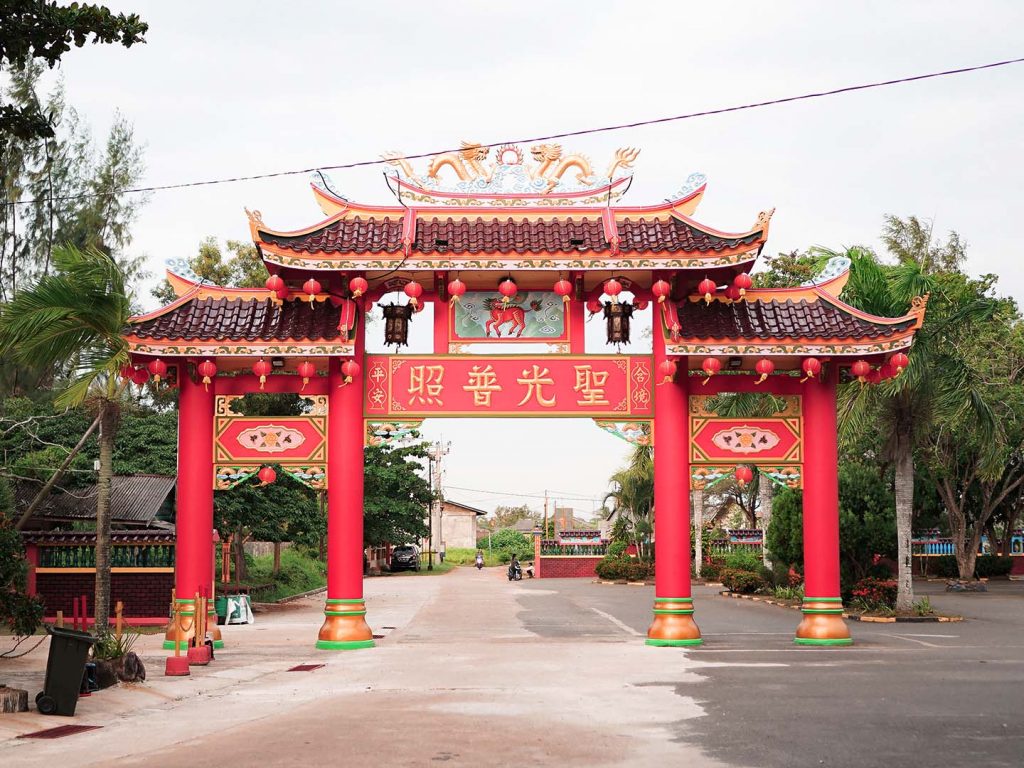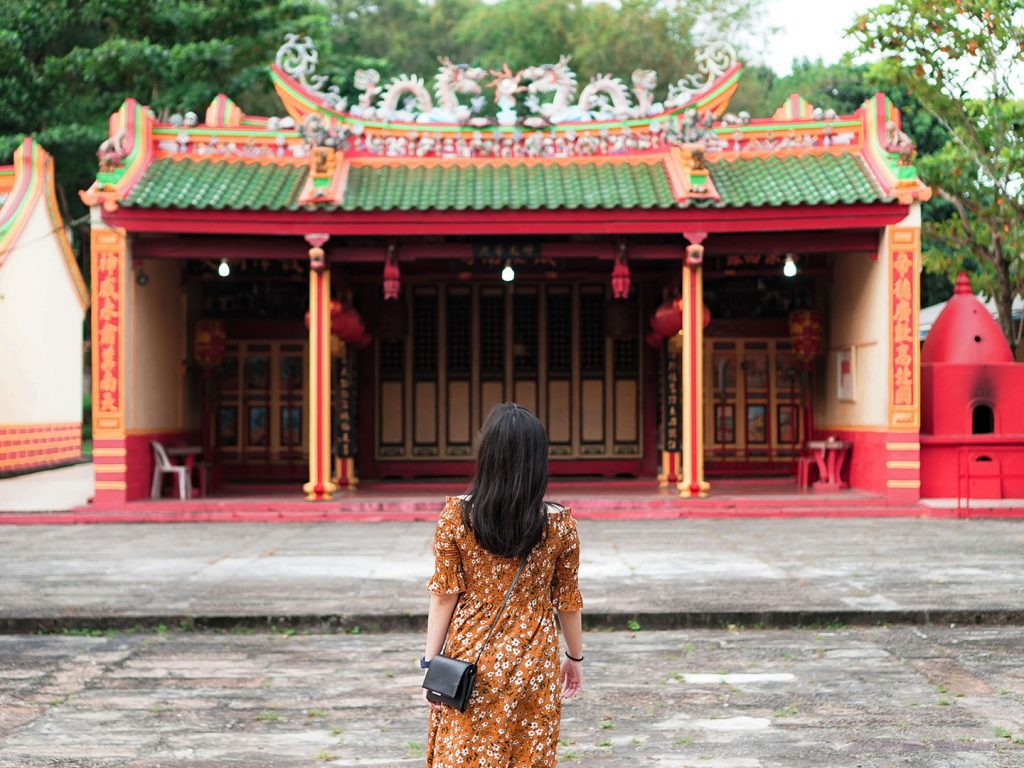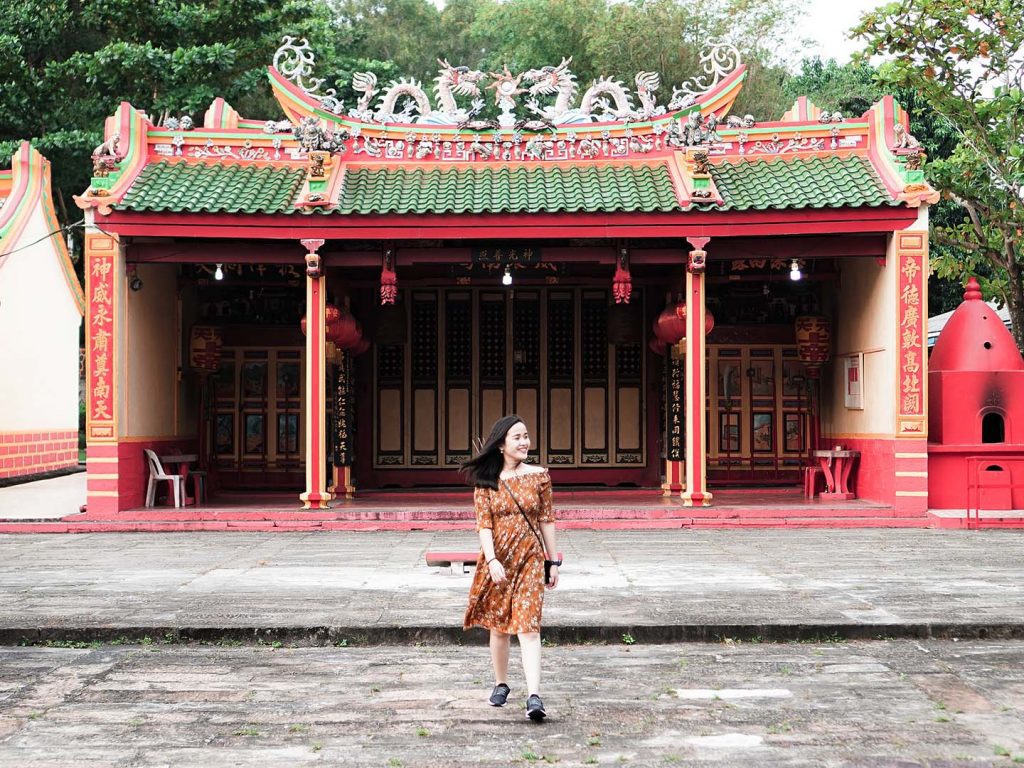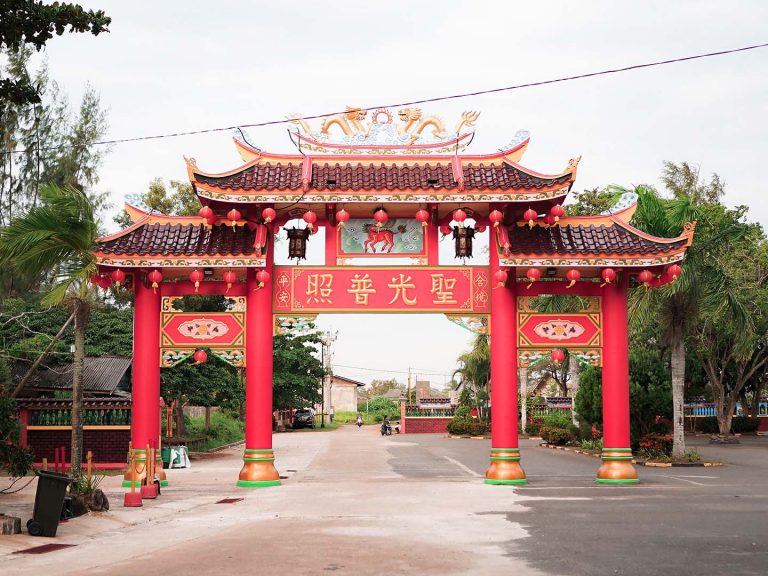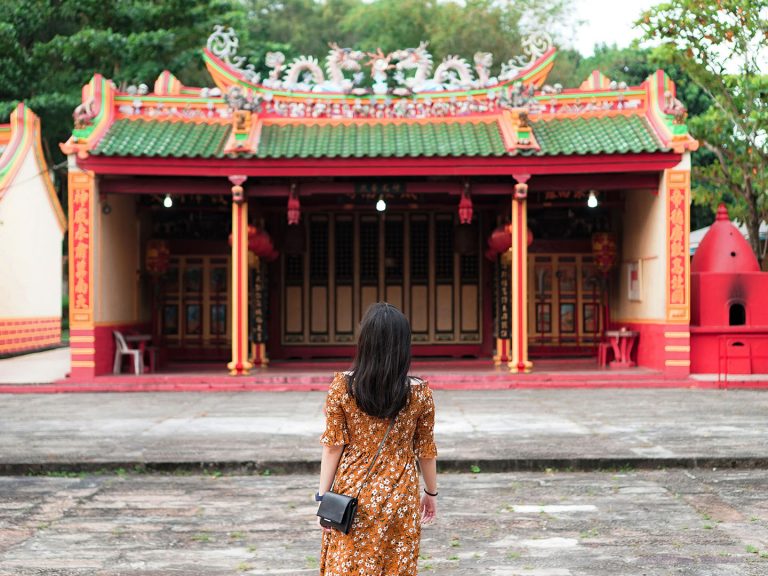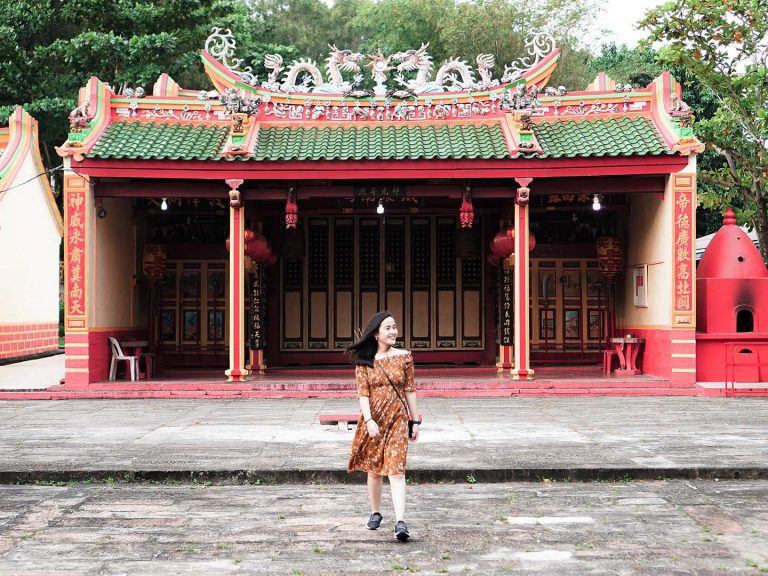Named after the The Old Lord Tua Lau Ya, patron deity of Teochews, Lau Ya Keng is a religious compound in Senggarang Village where you can find the oldest temples in Riau.
A trio of traditional Chinese temples sits right in front of the jetty, dedicated to the Supreme Emperor of Dark Heaven (Xuan Tian Shang Di), Goddess of the Sea (Mazu) and the God of Prosperity (Fude Zhengshen). Devotees pay homage to them respectively for success in business, safe travels in the seas and bountiful harvests.
The former two dates back to the Qing dynasty while the latter is said to be constructed later at a later date. Constructed by the early seafarers to show gratitude for their safe journeys, the Mazu temple’s oldest plaque discloses its presenter to be Tan Nguang Ga (陈源教) when he was the Kapitan, or the village chief of Senggarang. Interestingly, the shrine at the Banyan Tree Temple is rumoured to once housed Kapitan Tan.
Observe the ornamental temple rooftops with fish and dragon figures adorned with ceramic shard work and finished of at the ends with a grass motif represented by winding weed in typical Teochew-style. There are also dioramas illustrating Teochew opera scenes at the entrance.
Donated by Indonesians and Singaporeans, colourful divine sculptures grace the complex grounds including the 5m tall Thousand-Hand Guan Yin and Amitabha Buddha as well as characters from the classic ‘Journey to the West’ tale.
A more modern Mahayana Buddhist temple (Vihara Dharma Sasana) and a small shrine are located at the back. According to the temple caretaker, this temple was constructed with less traditional aesthetical elements so as to alleviate anti-Chinese sentiments during the late 1980s. The shrine used to be a small attap hut built to memorialize Senggarang’s “24 Martyrs” who were said to be executed for assassinating a disfavoured village chief and subsequently dedicated to a local Chinese medium.

